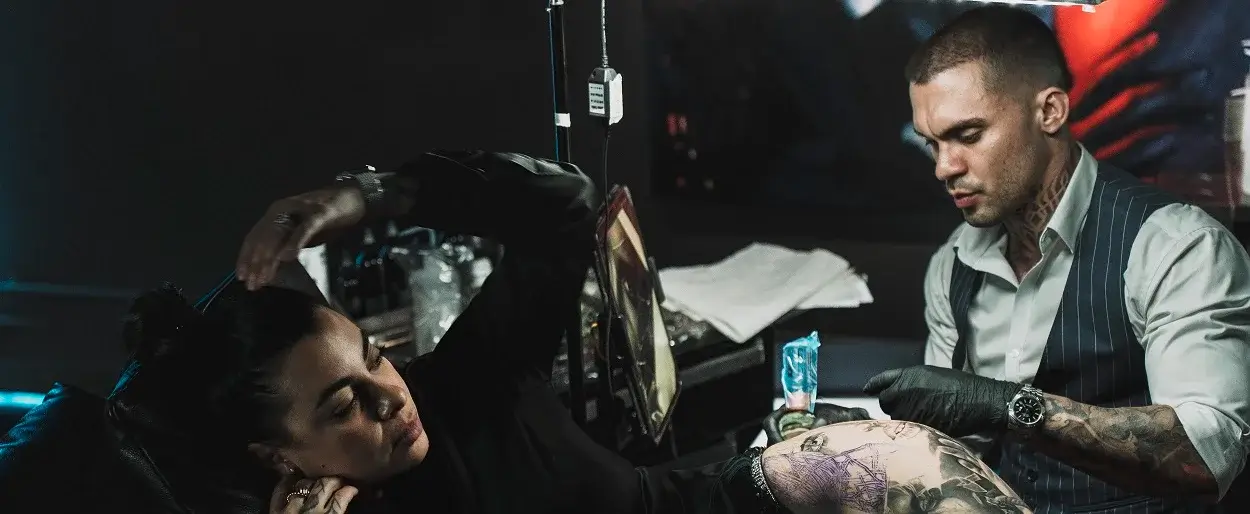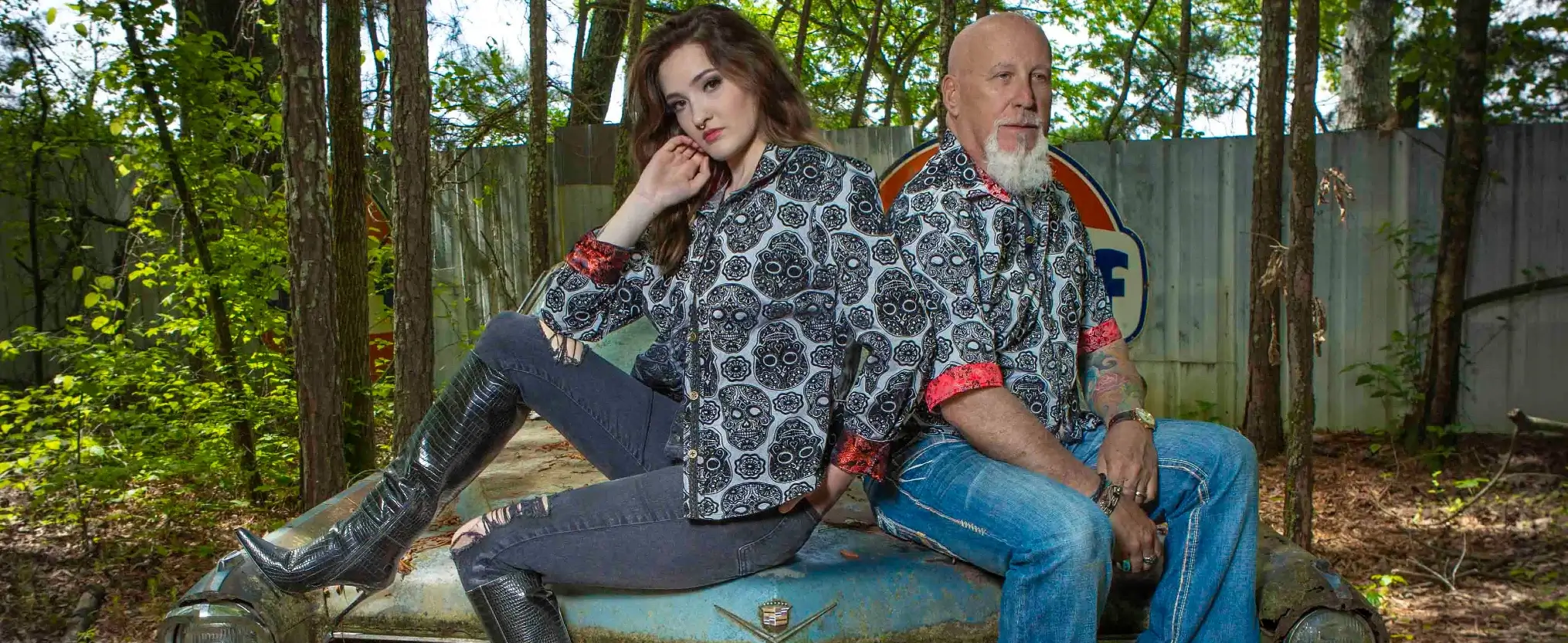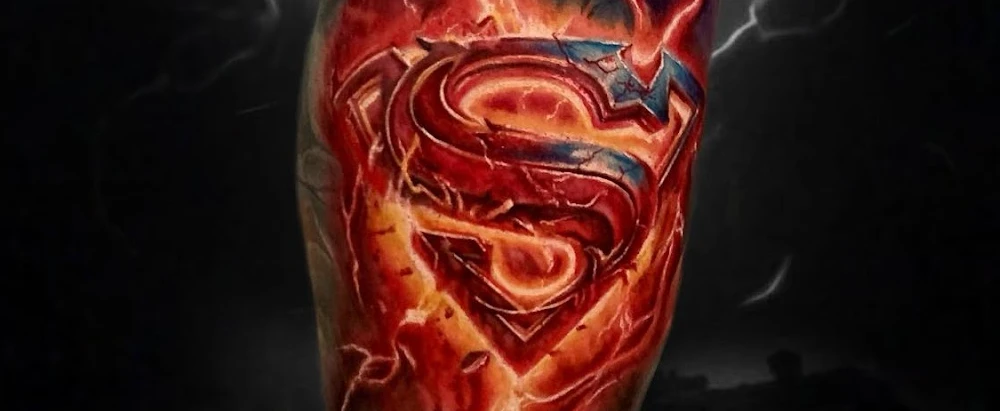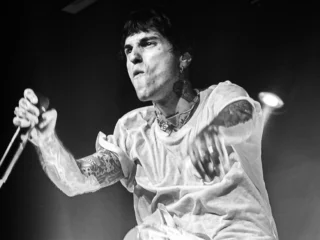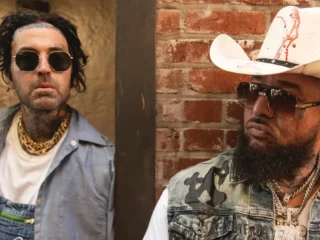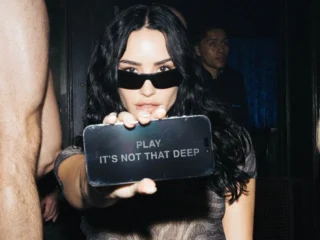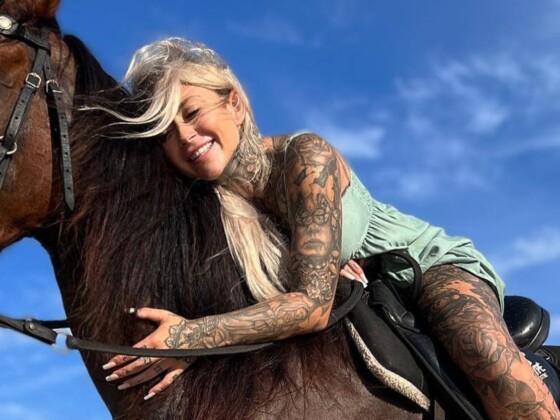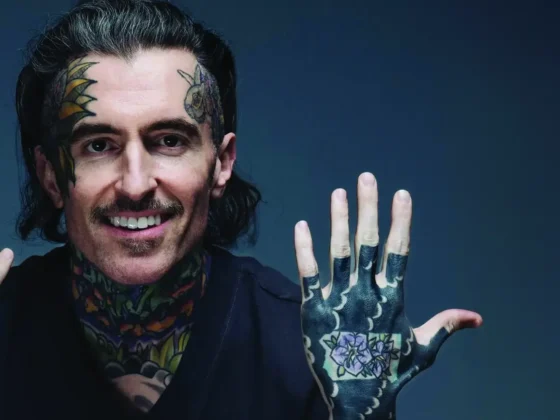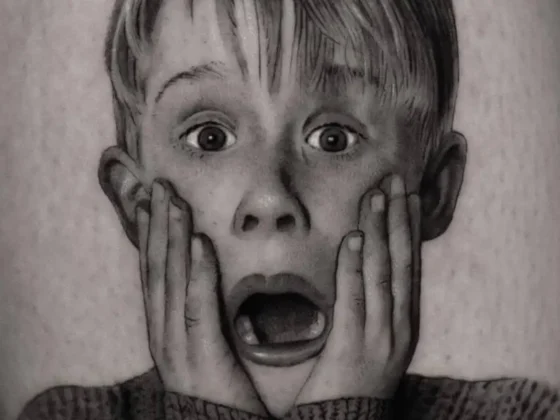Inked Mag Staff
May 27th, 2016
Star of History Channel’s ‘Alone’ Talks Survival and Tattoos
Imagine you’ve been left on a desert island and forced to fend for yourself. With you are only a few choice materials you stuffed into a mediocre backpack. There is…
Imagine you’ve been left on a desert island and forced to fend for yourself. With you are only a few choice materials you stuffed into a mediocre backpack. There is no shelter—you must build one of the island’s grounds. Your next meal is unknown; suddenly a fish eyeball is mouthwatering. Contact with anyone is an impossibility. You can’t call home to chat, no one knows if you’ve been injured or if you are starving, if you are freezing or dehydrated. No one is around to keep you sane, the only conversation you’ll have is with a personal camera. Tiptoeing around your campsite are momma bears with their cubs. Home is a faraway thought. You are Alone.
History Channel’s hit adventure series Alone enlists 10 survivalists to face the wilderness on their own. In its second season the contestants were dropped on Vancouver Island and left to use their outdoor skills as a means of outliving one another. For up to a year, the men and women competing must hunt their own food, build their own campsite and keep sane until they are the last man or woman standing. Up for grabs is a fat $500,000 check. Each participant is required to document their experience on film. There is no crew or producers, no medics or nutritionists, they are Alone.
Inked caught up with Larry Roberts of Minnesota, one of this season’s contestants who got a big tattoo honoring his experience on the show. He recalled first arriving on Vancouver Island. “They launched me out of a helicopter and everything went silent,” Roberts said. “Realizing it’s time to put up or shut up, everything was on me—that’s a pretty big moment.” It’s hard to fathom how one keeps sane when left alone in the woods for months on end, but Roberts said the idea of getting tattooed after the show kept him going. The 44-year-old couldn’t say whether or not he was the last man standing on Alone season two, but he did fill us in on how exactly he filmed himself without a crew, the weirdest things he ate to survive and the details of his new ink.
Check out our full interview with Roberts and catch the a preview of the show below. Alone airs every Thursday at 9pm on the History Channel.
How is life after Alone?
It’s definitely different. I still have thoughts about the island and a lot of times I actually wish I was still back there even though it was a difficult experience. It was so rewarding. The world we live in now seems like everybody is tugging on you in different directions. Out there it was really basic. You stay dry and eat.
Were you ever afraid?
I wouldn’t say afraid. I just put a lot of pressure on myself when I went out there. There was more anxiety and nervousness with trying to perform and to live up to the expectations that I had put on myself. Just the anxiety of trying to catch food.
You struggled a lot just to feed yourself.
I used a gill net, which just catches fish in their gills when they bump up against the net and try to squeeze through the little holes. But setting up the gill net in my area was very challenging. I had a preconceived idea before I ever saw my area that I’ll probably have a sandy beach that would allow me to drive stakes into the ground for the net, but I didn’t. My area was gravel on top of bedrock so I had to cut my branches for my gill net and wedge them in rocks and try to secure them without driving them into the ground. So I was carrying pretty heavy rocks, 30-40 pounds maybe. I made sure I had the net out as far as I could so I did it when the tide was out and the tide is really never sitting still, so that was a very calorie burning physically demanding test.
And then you’re working so hard you’re probably even more starving once it is set up.
Well that’s just it, I’m climbing my hill every single day to get to my camp, even just to sleep or get food. Sometimes I was working at night time because that’s when the tide would go out, so I’m getting a few hours of sleep. I was burning calories at a really rapid rate.
You had a really difficult time building a camp for yourself because of the grounds you had to work with.
Everybody had different challenges but the terrain that I was in, it was just so steep. I had to make stairs just to get up there. You need shelter to stay dry and warm. With the rains and even just climbing up and down the hill made it start to turn into a mud pit. It got pretty frustrating.
What was your biggest challenge?
Procuring enough food to meet the calorie expenditure that I was having to do.
What was the weirdest thing you ate?
Fish eyeballs and fish gills were by far the worst thing I ate. You get hungry enough and you’re like, The heck with it, I’m eating everything.

You incorporated a lot of the food you ate into your new back tattoo. Tell us about that.
Everything on it means something to me. The olympus, I ate so many of them things, they kept me going when I wasn’t able to catch a fish. When I did catch a fish it was like the biggest score ever. Your belly doesn’t even know you ate if you ate one periwinkle or one olympus but if you ate a fish your belly is like Yes! Finally! There is also the little helicopter on there. That was one of the coolest things ever. I mean I got flown in a helicopter just to land on a beach and get shoved out the door. The boat, if they had to pick up our media from our camera, they would come out in a boat.
In the show you see that spear that I had on my back, they call it a frog gig, but it’s a branch that I batoned and made little spikes out of. My knife was huge, you can’t survive without a knife. Even something as simple as a metal pot. You know, cooking and purifying water. That metal pot was just a huge advantage in the woods. I used the living heck out of mine. Everything I had a deep attachment to, it wasn’t like Oh that looks cool, we’ll throw that in there.
When did you decide on this Alone piece?
I had wanted a big piece for a long time but it wasn’t until sitting in my shelter that I started creating this design. I started to get really excited about it because it was something I could focus on. When it got dark I’d start thinking about all the different elements that I wanted to put in it.
What tattoos did you have before you started Alone?
I think I got my first one when I was 18 or 19 and it was just something that I had always wanted to do. I researched this one tattoo shop in San Diego and I saw some flash that they had of a tasmanian Devil. But right after it got done I wanted another one. It’s similar to marathon runners or people that work out and so when you get one done you want another one. It releases endorphins. Then I got a Native American head on my back, like a Sioux with the feather headdress. And I got an armband, another Native American piece with feathers. I got ‘em all done by the time I was like 24 or so.
What toll did Alone take on you mentally?
Sometimes in real life I’m a little quiet but it turns out when I have a camera in front of me I’ve got no problem spilling my guts to it. So I just sat there and talked nonstop to the camera. It gave me a job. It occupied my mind. When it got dark was when my mind started going.
Did it get to a point where you felt trapped?
The constant dwelling in your own mind will definitely wear on you. I was out there and I thought, Oh my gosh I forgot to tell my wife to fill the propane tank. We live out in the country, and if you don’t get the propane tank filled, the water heater is not going to work, the gas range isn’t going to work, there’s a lot of things that aren’t gong to work. I thought, My poor wife isn’t going to remember to go out and check the gage and she’s going to run out of propane and it’s going to cost money because they’re going to have to purge the system. Your mind just starts working on that like a dog with a ball. I worried about that for two weeks.

How did your family react when you confronted them about Alone?
Both my son and daughter were like, ‘Heck yeah Dad give it a try!’ My wife was very, very supportive. She said, ‘Go ahead, it’s your time.’ I got married at a young age, I was 18. I had my first kid at 21 and we kind of just devoted our whole lives to our kids and didn’t do a lot independently. Our anniversary will come around and the kids are like, ‘What’re we doing for our anniversary?’ We’re a very tight knit family. It was only after I came back that my wife confided in me that she was worried about me and that it was pretty difficult to run the household by herself.
I can only imagine. At least you’re worrying about them in their everyday life. But they have no idea what you’re going through.
Totally. We have a network of friends in my hometown that I knew would check on her, I knew my kids would check on my wife, but they had no contact whatsoever. They didn’t know if I had sustained an injury or anything. If there was some major emergency and I got pulled out or something they would have been notified, but as far as everyday struggles, they had no idea.
Why were you so drawn to Alone?
Basically it has been something that I have been training for and the only real test of my skills would be able to do something like this. I think of it like an athlete that never gets to play in a game. This adventure was like my game. It was a huge game, it was like my Super Bowl.
You have to be quite crafty to survive in the wilderness.
We take for granted everything that we have. Even a knife. I’m going on a cruise later this year, but you’re not even allowed to bring a swiss army knife in your luggage. Well what if something were to happen and you got washed up on the proverbial desert island? If you don’t have a knife you better know how to chip a rock and make a cutting tool. Even gutting a fish. How are you going to gut a fish without a knife?
You had to film your whole experience out there. What was that like?
I think most folks forget that we filmed everything. You’re not only putting all your [survival] skills into play, but you’re filming, which takes up a good portion of the daylight that you would normally have devoted to your survival. It rains there a lot so [we were given] this little hood thing that goes over the camera—what a pain in the rear end that was. You would think in today’s age they could come up with a waterproof camera that we could use out there but it was very delicate. One of the shots that I did, I had to climb up the hill, set the camera up, make sure it was going to be showing me, and then go back down and go about my business. And we had multiple cameras so they preferred if you got multiple angles on one shot. So I’d set one camera up and then I’d take a GoPro and set it up and about five minutes into the process I’d look over at the GoPro and it’d be fogging up or the hood would be draped over the big camera. It was a lot of work.
People are probably wondering how you kept cameras charged if you were “alone.”
Batteries. And they gave us a ton of the little memory cards how you would use in your cell phone or camera. Every morning you had to make sure the batteries were good to go on your camera. If you’re memory card was getting too full, you had to remember to bring extra memory or batteries if you were going on a walk. There was definitely a checklist that you needed to take care of. It gave you a little bit of a routine to work off of.
What could top this?
Alone season three.
You would do it all over again?
I would do it in a heartbeat. I’m ready to go right now. It wasn’t all roses out there but it is so much more real than everyday life. The everyday rat race is so old to me.

Editor's Picks
Bridging Classical Art and Modern Tattooing
Esteban Rodriguez brings the discipline of classical fine art to the living canvas of skin, creating hyper-realistic tattoos that merge technical mastery with emotional depth.
Show Your Ink Fashions Brings Custom Style to Tattoo Culture
Show Your Ink Fashions creates custom shirts designed to showcase your tattoos as wearable art, blending fashion with personal expression.
The Ultimate “Superman” Tattoo Roundup: Just in Time for Superman’s Return to Screens
With Superman’s big return to theaters, fans are revisiting some of the most iconic ink inspired by the Man of Steel.


